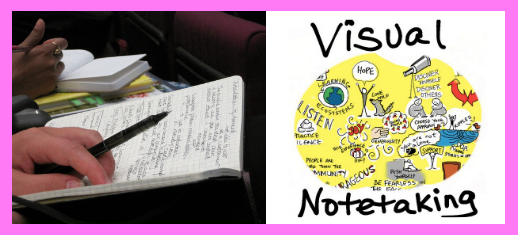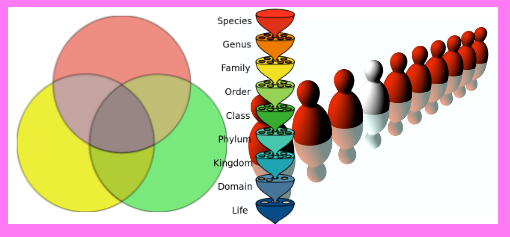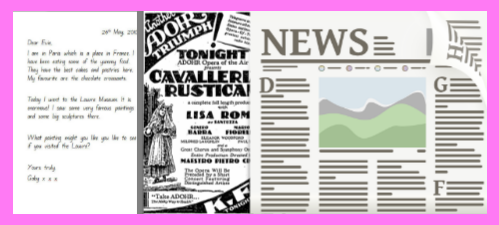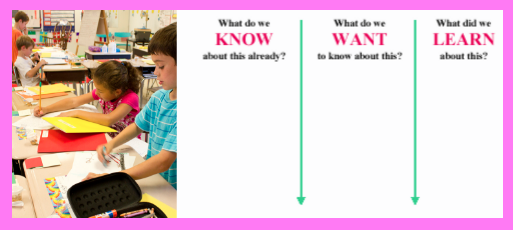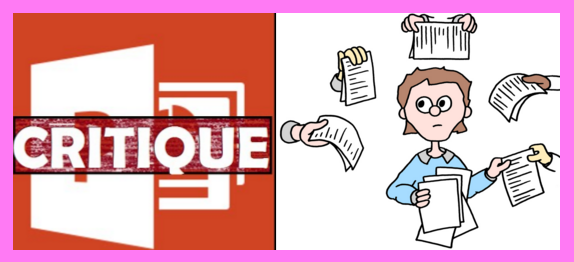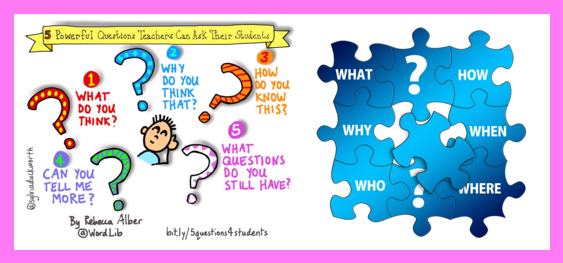Key terms:
- models:
- exemplars that demonstrate key features of a genre
- can be student work, teacher work or professional work
- critique lessons:
- lessons that define qualities of high quality work by analyzing models
- aimed at improving skills of whole group
- descriptive feedback:
- forms: teacher-student conference, written comments, peer-to-peer feedback
- precise constructive comments that help students improve quality of work
Tips for Building Safe Culture:
- norm: be kind, be specific, be helpful
- be clear and encouraging
- shape descriptive feedback with individual in mind
- be aware, stop comments that are unintentionally or intentionally unkind
- practice critiques on examples generated outside the classroom
Tips for Choosing Models:
- models show students where they are headed
- include examples of features tied to learning targets
- gather good examples of student work from previous projects
- file models by genre
- create models if needed
- use models from professional world
- choose models that illustrate different approaches to the same assignment or different strong features
Modeling with Weak Work
- work must be anonymous
- model respectful critique
- has compelling, common flaws
- can have a mixture of strong and weak elements
- best examples are results of students who tried hard but had confusions that created specific problems
Critique Lesson Steps:
- choose work samples that go with learning targets
- students individually examine multiple samples and try to make sense of them – what’s good, what’s confusing, etc.
- students in small groups discuss what features were strong and provide evidence
- teacher facilitates whole group discussion of models
- gathers general observations
- gathers observations that relate to learning targets
- discusses which parts are strong/accurate and explains why with evidence
- students in small groups brainstorm attributes of good work
- teacher facilitates whole group discussion to synthesize their tips for producing strong work
Critique Lesson Tips:
- target critique to specific features that tie to learning targets
- clarity of learning targets should not prevent students from sharing unrelated surprises and discoveries
- focus on content, concepts, skills, genre features, habits of scholarship
Possible Times to Implement Critique Lessons:
- at start of project to introduce a genre
- in middle of project during work time to support focused revision
- just before presenting work to fine-tune final revisions
- just before self and peer assessment sessions to teach students how to give effective feedback
- after assignment is due to reflect on quality and set new goals
Facilitating Discussions Tips:
- define sequence of discussion prompts that align to learning targets
- structure time, set amount of time per section
- define and assign discussion roles
- define norms relating to participation and listening
Gallery Critique:
- all students post work to examine
- good for identifying good features and strategies
- too many samples to analyze gaps
- for written work – short excerpts of larger piece work best
- Steps:
- Introduce norms and goals
- Post work
- Silent gallery walk and take notes of strong examples
- Discuss what was noticed
- Discuss what’s working using specific examples and explanations
In-Depth Critique
- single work is analyzed for what’s working and not working
Critique Facilitator Tips:
- Strategically choose students for comments
- Radiate enthusiasm and positivity
- Offer compelling statements to build interest and add key points
- Reframe student observations to make them more clear when needed
- Guide discussion towards learning targets
- Make sure students observe discussion norms
- Have student rephrase vague statements for more clarity
- Model good critique
- Make clear that the work itself, not the author, is the subject of critique
- Model use of “I” statements – “I think … “
- Start discussion with warm feedback before moving to cool feedback
- Frame ideas as questions whenever possible
- Keep discussion moving at an energetic pace
- Help students notice and remember key comments in discussion
- Direct attention to important examples (if not mentioned)
- Guide discussion towards specific strategies that meet learning targets
- Display key ideas and strategies in clear specific language
- Guide students to use academic vocabulary in discussions that go with learning targets
Features of Descriptive Feedback
- Focused on growth of individual student’s skills and/or understanding
- Typically a one-one-one teacher-student exchange
- Rests on base of a strong positive teacher-student relationship
- Includes strategic positive comments that make feedback easier to hear
- Based on strong knowledge of students’ strengths, areas of growth, and goals
Continuum of How Students Hear Feedback
- Blames teacher for being mean
- Ignores feedback
- Hears feedback but doesn’t know how to use it
- Receives feedback, uses it but doesn’t meet goals
- Receives feedback, uses it, reaches goals and can teach others
Planning for Effective Feedback
- Know that students who are most likely receive to feedback well are already successful, see continuum above
- Communicate belief in students’ ability to use feedback to meet high expectations
- Teach students the language of critique related to learning targets
- Consider good timing:
- Provide enough time for students to use the feedback
- Immediate feedback is best for factual knowledge
- Time delay in feedback is better for more complex tasks
- Provide frequent ongoing feedback on major assignments
- Consider quantity:
- Prioritize feedback related to learning targets
- Consider how much feedback individual student can take in at once
- Written vs Oral feedback?
- oral feedback while student is working is more effective and efficient
- get students to paraphrase oral feedback
- give within teacher-student conference
- written feedback on a checklist, assignment sheet, or rubric
- Group vs Individual feedback?
- individual feedback conveys caring
- whole group feedback is good for correcting a common error
- Consider tone:
- positive, constructive
- suggestions not prescriptions
- avoid pointing out what’s wrong without offering suggestions
- avoid punishing tone
- Aim for clarity:
- student-friendly, specific
- Keep Learning Target in mind:
- connect feedback to how to improve on learning goals
- avoid making it personal
- Leverage comparisons:
- use checklists or rubric with criteria to compare student work to
- avoid comparing work to other students – can damage student motivation
- Be aware of student perceptions of feedback
- does student understand feedback?
- does student feel safe and valued?
- situate feedback within positive culture and positive relationships that value student-engaged assessment
- Feedback Implementation Tips:
- Teacher-Student:
- plan and schedule conference times
- be concise and clear
- target one skill at a time
- use student work to assess effectiveness of feedback
- Peer and Self Feedback
- teach students purpose and strategies for giving feedback
- revisit learning targets often and check that students know how to recognize them in student work
- model giving effective feedback
- emphasize self over peer feedback – research has shown that the former is more effective
- precede feedback sessions with whole group critique lessons that scaffold how to give effective feedback

Models, critique, and descriptive feedback are tools for improving performance in school and in many other settings and professions. Students can’t visualize quality work in a genre without having seen and analyzed examples. Examining models makes standards real and tangible. Critique and descriptive feedback help build a culture that promotes agency (effort develops skills). They teach students how to achieve quality standards more independently.
`
Preparation Steps
- Gather strong models that demonstrate key learning targets
- Research activities aimed at identifying strategies for analyzing models, peer/self critiques, and generating quality feedback. See above and literacy articles for ideas.
- Build culture that values critique and constant improvement
Early Implementation Steps
- Teach students how to be kind, specific and helpful in their feedback
- Incorporate critique lessons and descriptive feedback into product scaffolding and benchmark days
- Use learning targets to frame critique and descriptive feedback
- Facilitate critique lessons using tips listed above.
- After critique lessons have modeled effective feedback, facilitate peer and self feedback activities. See tips listed above.
- Provide ongoing individual feedback to students in short conferences. See tips above.
Advanced Implementation Steps
- Use practiced protocols to reflect on work during process of creation, right before presentations and after presentations
- Use critique lessons to help students co-author or author rubrics for products
- Use checklists of common pitfalls gathered over time to guide peer/teacher critique sessions








